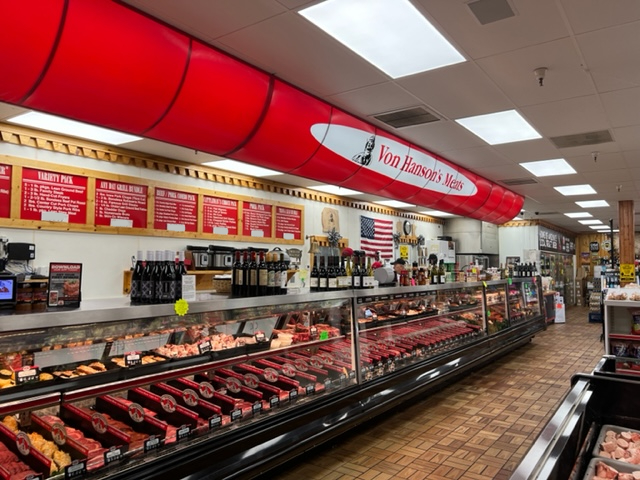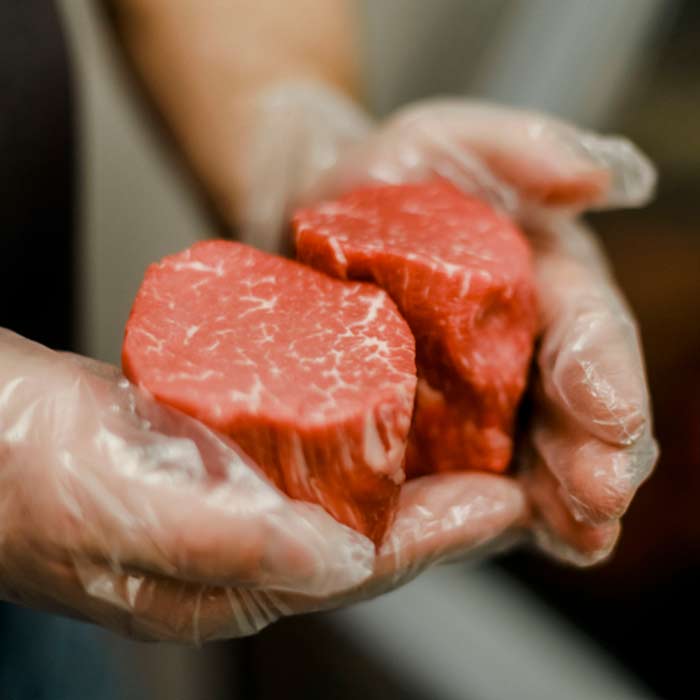Why Bagley Farms Meat Market Edwardsville IL Is the very best Option for Top Quality Meats
Why Bagley Farms Meat Market Edwardsville IL Is the very best Option for Top Quality Meats
Blog Article
Reveal the Art of the Butcher's Cut in a Modern Meat Market
In the ever-evolving landscape of contemporary meat markets, the butcher's cut has transcended its traditional origins, merging olden craftsmanship with modern practices. What truly establishes the modern butcher apart is their capacity to forge a much deeper connection between customers and the origins of their meat.
Development of Butchery Techniques

The mid-20th century saw butchery strategies better improved by clinical insights into muscle biology and meat aging, enhancing both inflammation and preference. Technologies like vacuum cleaner packaging and refrigeration extended product shelf-life, allowing butchers to expand offerings and improve top quality control. This duration likewise noted the increase of specialized tools, such as band saws and meat slicers, which raised precision and efficiency in meat handling.
The 21st century has actually introduced electronic innovation right into the butchery world. Computerized systems currently help in tracking pet provenance and optimizing cuts to fulfill certain client preferences. Furthermore, a revival in artisanal butchery has arised, blending standard skills with modern-day knowledge to accommodate consumers looking for ethical and lasting meat options. This advancement underscores a vibrant interplay in between tradition and advancement, conference contemporary needs while preserving the craft's heritage.

Understanding Meat Cuts

Comprehending the complexities of meat cuts is essential for both butchers and customers seeking high quality and value. For butchers, specific cuts mirror skill and regard for the craft, ensuring marginal waste and optimal return.
The main categories of meat cuts consist of primal, sub-primal, and retail cuts. Primitive cuts, such as the loin, rib, and chuck, are the big areas initially divided from the carcass. Butchers then damage these down even more right into sub-primal cuts, before ultimately creating retail cuts available to customers, like ribeye or tenderloin. Each stage requires cautious interest to physiological framework and muscle mass make-up.
Comprehending muscle mass make-up is important; muscular tissues made use of much more regularly by the animal often tend to be tougher and are best fit for slow-moving cooking techniques, while less-used muscular tissues, like those located in the loin, are much more tender and suitable for cooking or roasting. Familiarity with these distinctions equips customers to make enlightened selections, enhancing their culinary ventures.
Choosing High Quality Meat
Selecting the right meat entails even pop over to this site more than just picking an aesthetically enticing piece from the display. The art of picking top quality meat needs a discerning eye and knowledge of details features that represent freshness and quality.
Secondly, consider the marbling, which refers to the white streaks of fat within the muscle. Correct marbling is a crucial indicator of inflammation and flavor, as it melts during food preparation, improving the meat's juiciness. Bear in mind, higher marbling often associates with premium top quality cuts, such as USDA Prime.
Structure is an additional vital factor; meat must really feel solid to the touch, not slimed or excessively soft. In addition, be mindful of the aroma. Fresh meat ought to have a tidy, neutral smell, devoid of any sour or repulsive smells.
Matching Cuts With Food Preparation Methods
Efficiently pairing cuts of meat with the suitable cooking techniques is crucial for achieving optimal flavor and texture. These methods improve the meat's natural flavors and guarantee a juicy surface.
On the other hand, tougher cuts like brisket and chuck roast are rich in collagen, which breaks down into gelatin when cooked slowly. These cuts are ideal for braising or slow roasting, allowing the meat to tenderize over time and create deep, intricate tastes. Cuts such as short ribs and pork shoulder make out well with slow-cooking approaches, where expanded cooking times check here change their robust textures into delicious recipes.
Lamb shanks and oxtail, which need extended cooking to tenderize, are perfect candidates for cooking or sluggish simmering. These techniques coax out rich, hearty tastes while preserving wetness. By comprehending the distinct qualities of each cut, cooks and home chefs alike can elevate their cooking productions, making sure each meal is both satisfying and remarkable.
The Butcher's Function Today
Navigating the evolving landscape of the modern-day meat market, the butcher's function today extends past mere prep work of cuts. Contemporary butchers are culinary craftsmens, teachers, and advocates for lasting practices. They link the try this out space in between the ranch and the fork by guaranteeing ethical sourcing, recognizing pet husbandry, and prioritizing openness in the supply chain. This shift mirrors the growing consumer need for quality over quantity, where provenance and animal well-being are paramount.
In addition to crafting specific cuts, butchers now engage straight with consumers, providing cooking suggestions and tailoring choices to match individual requirements and choices. Their experience in meat aging, marbling, and flavor accounts encourages consumers to make informed decisions, boosting their cooking experiences. This customized service exhibits the butcher's advancing role as a trusted expert in the cooking area.
Furthermore, butchers are essential in decreasing waste, making use of whole animals to develop diverse items such as sausages and supplies - bagley farms meat market edwardsville il. This extensive approach not only values the pet yet additionally aligns with contemporary sustainability goals. In this method, the contemporary butcher symbolizes both custom and technology, adjusting to an ever-changing market while maintaining the virtuosity and honesty of their craft

Verdict
The modern butcher's craft elaborately weaves traditional strategies with contemporary innovations, stressing sustainable practices and honest sourcing. Mastery in recognizing diverse meat cuts and top quality signs empowers butchers to supply informed referrals, lining up specific cuts with ideal cooking techniques. This knowledge not just raises cooking experiences however also enhances the connection between customers and the origins of their food. By recognizing historical methods while embracing modern needs, the butcher's function continues to be vital in today's innovative meat market.
Report this page